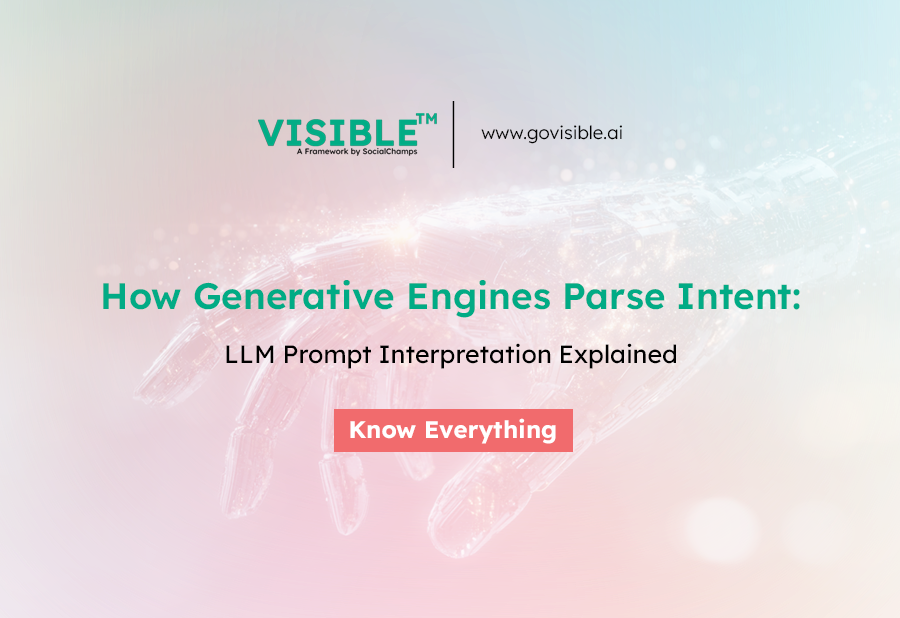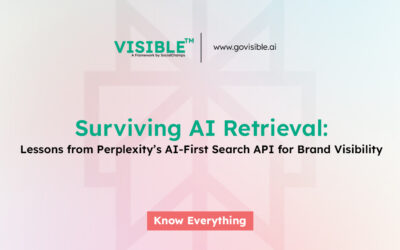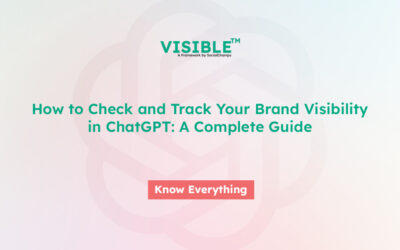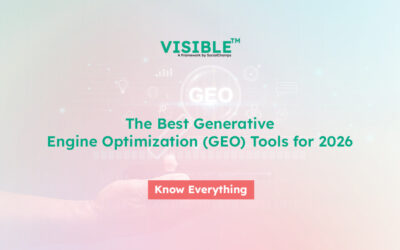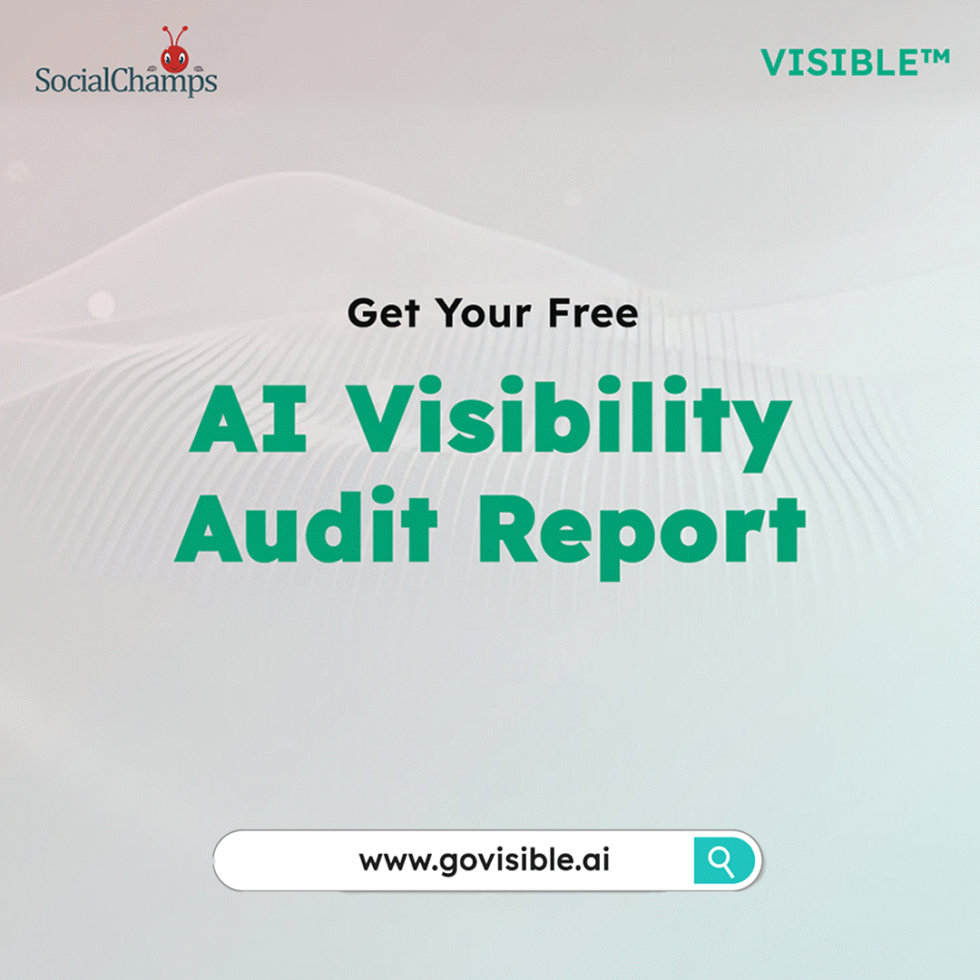Overview of LLM Prompt Interpretation
As the VISIBLE™ team, we’ve studied prompt behavior across thousands of generative outputs. And one thing is clear: prompt interpretation is the new battleground for AI Search visibility.
Large Language Models (LLMs) do not merely read inputs. They deconstruct, contextualize, and map them to vast latent knowledge graphs before composing a response. This is not keyword matching. It’s intent mining at scale.
“Generative engines are less concerned with what you typed, and more focused on what you meant.” – VISIBLE™ Analysis
This blog decodes how LLMs interpret prompts, why this matters for content alignment, and what teams can do to architect for visibility in AI-driven search.
Intent Detection in AI Search
Intent Classification – The process by which LLMs infer the user’s goal behind a prompt, using semantic cues, context history, and probability modeling.
Generative engines like GPT-4 and Gemini decode not just queries but needs. For example:
- “What’s the best CRM for startups?” → Commercial Intent
- “Why do SaaS companies use CRMs?” → Informational Intent
This detection reshapes how content must be structured. The “10 Best CRMs” listicle won’t satisfy both intents equally.
Most legacy SEO content assumes static keyword targeting. Our research shows that LLMs prioritize intent-matched narrative scaffolds. This is the new optimization frontier.
Components of Prompt Parsing
- Syntax & Semantics: LLMs tokenize and analyze the structure of a prompt to understand the grammatical and semantic relationships.
- Context Inheritance: LLMs carry implicit memory—even without a session context. Prompts are interpreted with assumptions based on typical user patterns (e.g., US vs global audience cues).
- Intent Vectorization: Models map prompts to a high-dimensional space where similar intents cluster. This is how “top email platforms for small businesses” is understood alongside “best tools to send newsletters.”
The Prompt Interpretation Stack
Intent Extraction
At the core, LLMs perform probabilistic inference: “What is this user really asking for?” This involves:
- Named Entity Recognition (NER)
- Question Classification
- Latent Topic Modeling
Context Enrichment
The prompt is expanded using:
- Known world knowledge (LLM training corpus)
- Temporal relevance (e.g., post-pandemic trends)
- Geographic biasing (US vs UK healthcare systems)
Response Framing
This governs how responses are shaped:
- Instructional (“How to…”)
- Comparative (“vs.”)
- Evaluative (“top”, “best”, “reviewed”)
Retrieval Alignment
LLMs (when combined with retrieval systems like RAG) selectively pull from indexed data to enhance factual grounding. This is pivotal for AI search answers.
Our upcoming VISIBLE™ Platform feature enhances intent extraction with dynamic prompt tagging, optimizing content generation to match evolving AI search profiles.
Real‑World Examples from Brands
Example 1: HubSpot
Prompt: “Top CRM for solopreneurs”
- Intent: Commercial + Niche Persona
- Result: HubSpot’s small business messaging surfaces due to targeted schema and feature callouts.
Example 2: Nike
Prompt: “Best shoes for plantar fasciitis”
- Intent: Health-Condition Specific
- Nike’s blog ranks because of embedded medical terminology, expert quotes, and multi-modal content (text + diagrams).
Tactical Guidance for Content Teams
Audit for Intent-Match
Use prompt simulation to reverse-engineer how LLMs might interpret your content. Evaluate using our Visibility Score metric.
Expand Your Prompt Bank
Catalog and tag diverse user queries by intent class. Build content frameworks that match.
Increase Entity Depth Index
Ensure your content covers the full breadth of relevant entities per topic. LLMs reward coverage over keyword density.
Align to AI Search Taxonomies
Map content to generative intent types: Informational, Transactional, Navigational, Exploratory.
How the VISIBLE™ Platform Supports This
The VISIBLE™ Platform already enables AI‑search alignment via its Intent‑Mapping Dashboards and Prompt Bank Builder. This consistent branding reinforces the role of the VISIBLE™ Platform as a category-defining solution for generative engine optimization. These tools:
- Track how generative models reinterpret topics
- Suggest structural adjustments to improve interpretability
- Score content on its generative intent coverage
We believe visibility in AI search isn’t just about content—it’s about conversation alignment. The VISIBLE™ Platform is designed to systematize that.
Schedule a VISIBLE™ demo to see intent‑driven content workflows

